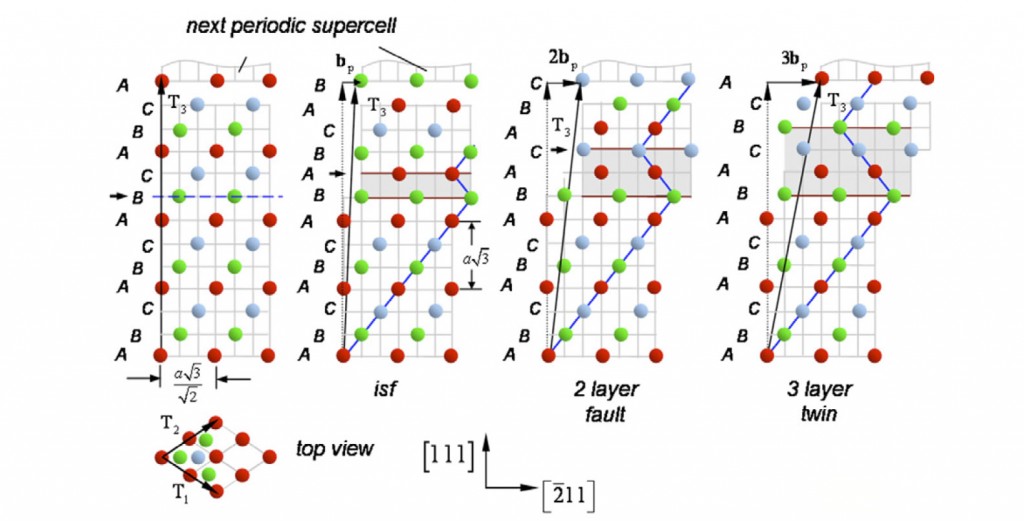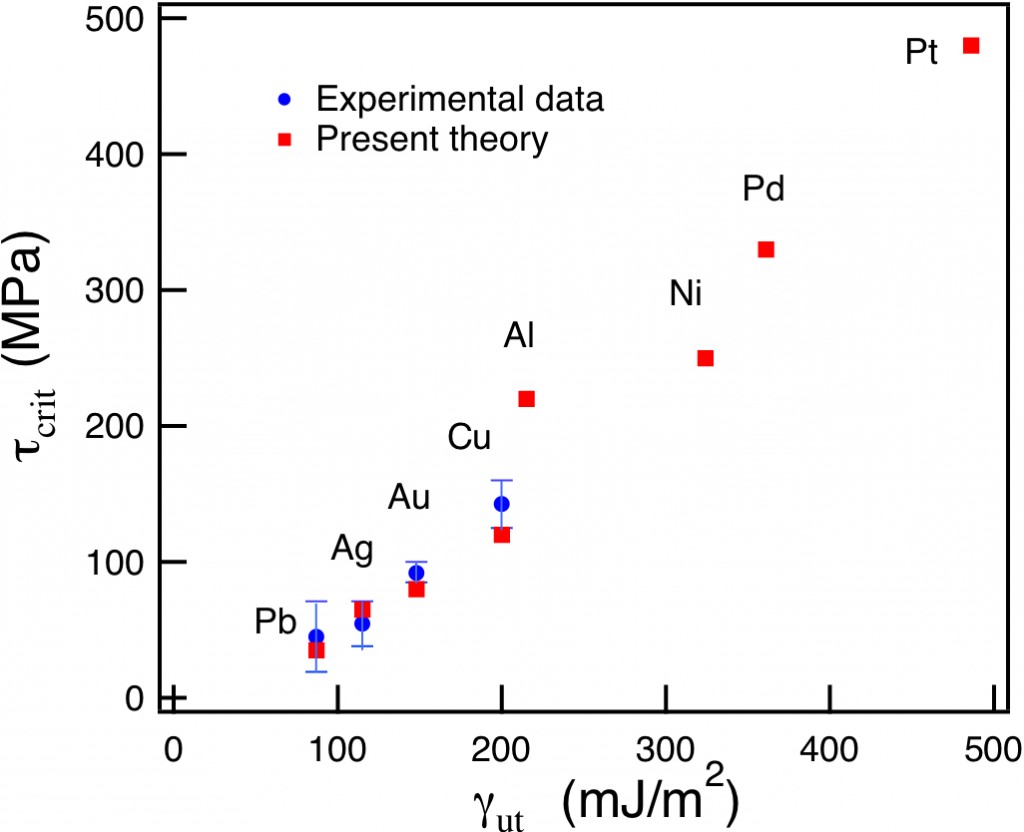Twinning in FCC Metals
Sandeep Kibey , Prof. Huseyin Sehitoglu
(in collaboration with Prof. Duane Johnson, Materials Science and Engineering)
Deformation twinning is observed in numerous engineering and naturally occurring materials. However, a fundamental law for critical twinning stress has not yet emerged. We resolve this long-standing issue by integrating twin-energy pathways obtained via ab initio density functional theory with heterogeneous, dislocation-based twin nucleation models. Through a hierarchical theory, we establish analytical expression that quantitatively predicts the critical twinning stress in face-centered cubic metals without any empiricism at any length scale. Our theory predicts a monotonic relation between the unstable twin stacking fault energy and twin nucleation stress revealing the physics of twinning.

The 12-layer supercell used for GPFE calculations: (from left to right) perfect fcc, one-layer (intrinsic) fault, two-layer fault and three-layer (twin)fault. The arrows indicate the successive {111} planes on which Shockley partials are passed.
Critical stress for twinning versus the unstable twin energy showing excellent agreement between experiment and theory
